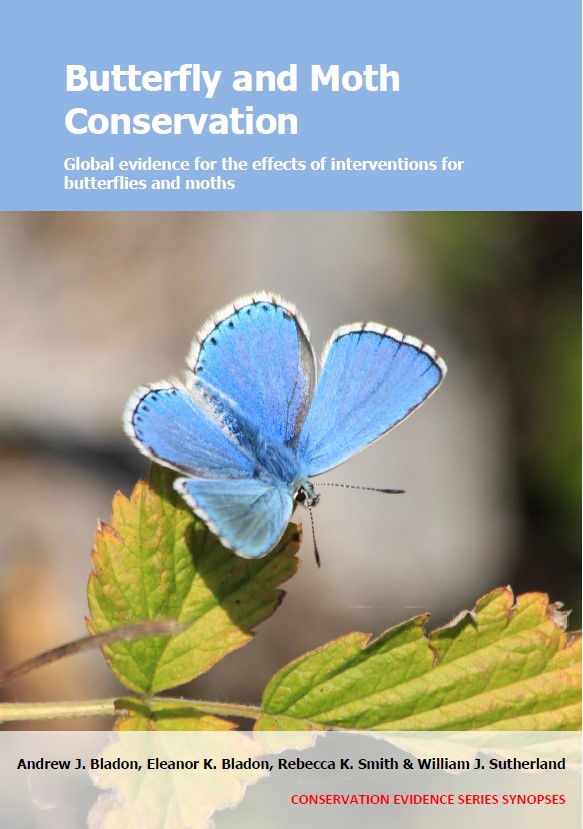Use mixed stocking
-
Overall effectiveness category Awaiting assessment
-
Number of studies: 3
View assessment score
Hide assessment score
How is the evidence assessed?
-
Effectiveness
not assessed -
Certainty
not assessed -
Harms
not assessed
Study locations
Supporting evidence from individual studies
A replicated, paired, site comparison study in 1989–1993 at an upland grassland in Scotland, UK (Dennis et al. 1998) found that plots grazed with sheep and cattle had a lower abundance of small invertebrates (including caterpillars) than plots grazed by sheep alone when grazing intensity was high, but there was no difference when grazing intensity was reduced. Heavily grazed plots with both sheep and cattle had fewer invertebrates (4–15 individuals) than plots grazed at high intensity by sheep alone (4–31 individuals). However, when grazing intensity was reduced there was no significant difference in the number of invertebrates between plots grazed by sheep and cattle (9–35 individuals) and sheep-only plots (6–39 individuals). Invertebrate abundance was highest at a fifth plot that was ungrazed (70–223 individuals). From 1989–1991, four experimental grazing plots (1–3 ha) were established. From May–October each year, the number of sheep/plot was adjusted weekly in order to maintain different sward heights (4.5 and 6.5 cm). From June–August, six yearling cattle were also grazed on two of the plots. From 1992, a fifth plot was left ungrazed. In August 1993, invertebrates were sampled from both tussocks and low sward at each of six randomly selected points/plot using a d-vac suction sampler.
Study and other actions testedA replicated, randomized, controlled study in 2003–2005 on an upland grassland in Perthshire, UK (Dennis et al. 2008, same experimental set-up as 3) found that mixed stocking did not affect the abundance of moth caterpillars under low intensity grazing. After 18 months of grazing, there was no significant difference in the number of caterpillars on lightly grazed mixed stocking (2.4 individuals/plot), sheep-only (1.9 individuals/plot), ungrazed (2.8 individuals/plot) and commercially grazed plots (2.3 individuals/plot). After 30 months, the number of caterpillars remained similar in the mixed stocking (2.4 individuals/plot) and sheep-only (1.9 individuals/plot) plots, but this was lower than in the ungrazed plots (4.9 individuals/plot) and higher than in the commercially grazed plots (0.5 individuals/plot). From January 2003, three grazing regimes (mixed: sheep and cattle equivalent to 0.9 ewes/ha; sheep-only: sheep at 0.9 ewes/ha; commercial: sheep at 2.7 ewes/ha) and an ungrazed treatment were replicated six times each in twenty-four 3.3-ha plots (in three pairs of adjacent blocks). Caterpillars were sampled by sweep net in 2003–2005.
Study and other actions testedA replicated, randomized, controlled study in 2003–2007 on an upland estate in Scotland, UK (Littlewood 2008, same experimental set-up as 2) found that plots grazed with sheep and cattle at low density had a lower abundance of moths and fewer moth species than plots grazed with sheep only at low density, but more moths than plots grazed by sheep at commercial stocking densities. On mixed grazing plots, both moth abundance (42 individuals/night) and species richness (11.3 species/night) were lower than on sheep-only plots grazed at the same low density (abundance: 52 individuals/night; richness: 12.3 species/night) and ungrazed plots (abundance: 48 individuals/night; richness: 13.2 species/night), but higher than on sheep-only plots grazed at commercial densities (abundance: 34 individuals/night; richness: 10.6 species/night). In January 2003, one of four grazing treatments was established on each of 24 plots (3.3 ha each) on a grazed acid grassland upland estate. The treatments were: low density mixed grazing (2 sheep/plot plus two cows and calves for 4 weeks in autumn); low density sheep grazing (3 sheep/plot); commercial high density sheep grazing (9 sheep/plot); ungrazed control. Moths were sampled between June and October 2007 using four 15 W light traps placed randomly within plots of each treatment, for six or seven sample nights/plot.
Study and other actions tested
Where has this evidence come from?
List of journals searched by synopsis
All the journals searched for all synopses
This Action forms part of the Action Synopsis:
Butterfly and Moth Conservation
Butterfly and Moth Conservation - Published 2023
Butterfly and Moth Synopsis





)_2023.JPG)














